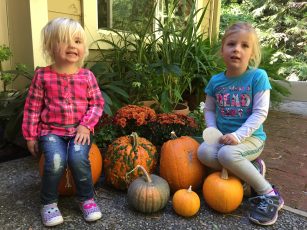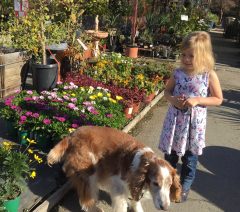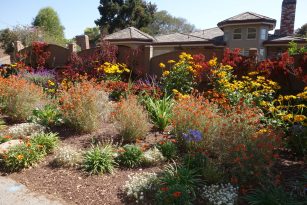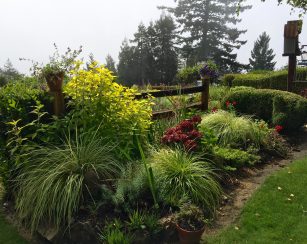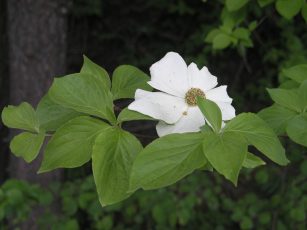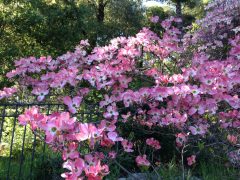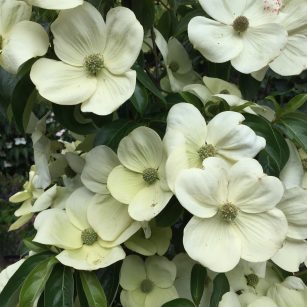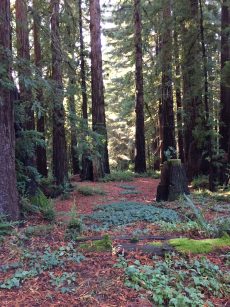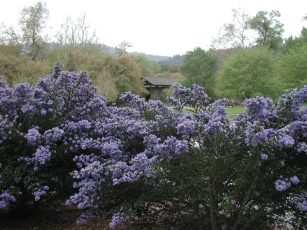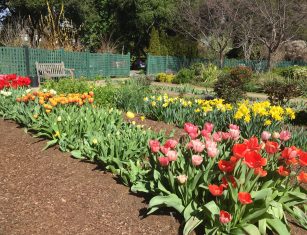
The other day I stopped by historic Gamble Gardens in Palo Alto. I had some free time before my eye appointment and Sherman, my dog, wanted to stretch his legs. You can mark time with the events in the botanical world and this garden is packed with good examples. School kids were tending the vegetable starts and beneficial-friendly flower beds. Volunteers were looking after the formal rose garden and tulip beds. Visitors like me and Sherman just wanted to take in all the early spring beauty.
Phrenology is the study of key seasonal changes in plant and animals from year to year such as flowering times, emergence of insects and migration of birds. When do they occur each year? Phenology is a real science that has many applications. In farming and gardening, phenology is used chiefly for planting times and pest control. Certain plants give a cue, by blooming or leafing out, that it’s time for certain activities, such as sowing particular crops or insect emergence and pest control. Often the common denominator is the temperature.
Websites like USA National Phenology Network at http://www.usanpn.org/ offer lots of information on the subject.
Indicator plants are often used to look for a particular pest and  manage it in its most vulnerable stages. They can also be used to time the planting of vegetables, apply fertilizer, prune and so on.
manage it in its most vulnerable stages. They can also be used to time the planting of vegetables, apply fertilizer, prune and so on.
Here are some common garden plants and what they indicate:
When daffodils begin to bloom, sow peas.
When dandelions bloom, plant spinach, beets and carrots.
When lilac leaves are the size of a mouse’s ear, sow peas, lettuce and other cool-weather crops.
When lilacs are in full bloom, plant beans.
Once lilacs have faded, plants squash and cucumbers.
When apple trees shed their petals, sow corn.
When dogwoods are in full bloom, plant tomatoes, peppers and early corn.
When bearded iris are in bloom, plant peppers and eggplants.
When locust and spirea bloom, plant zinnia and marigolds.
When forsythia and crocus bloom, crabgrass is germinating. When this happens the soil temperature at a depth of 4″ is 55 degrees. Treat with an organic pre-emergent.
When crocus bloom, prune roses and feed your lawn.
Mexican bean beetle larvae appear when foxglove flowers open.
Record your own observations. Another great site is National Sustainable Agriculture Information Service at http://attra.ncat.org. Sites like these can also help you design orchards for pollination and ripening sequence, design for bee forage plantings, design perennial flower beds and wildflower plantings as well as plantings to attract beneficial insects and enhance natural biological control. How cool is that?


